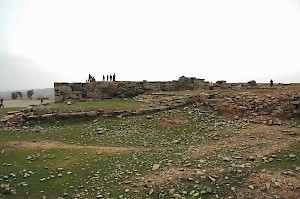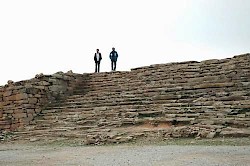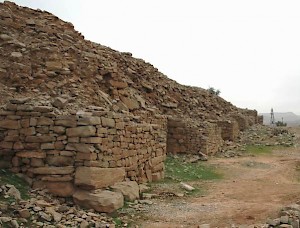Masjid-e Solaiman
Q82074167Masjid-e Solaiman ("Solomon's Mosque") or Sar-e Masjid: ancient town in southwestern Iran.

A visitor of Masjid-e Solaiman will see several walls of piled up stones ("cyclopean walls"), which have been dated to the age before the ancient Persians started to build more regular walls, like the Tall-i Takht at Pasargadae. The terrace itself, which measured some 90x50 meters, is usually interpreted as a sanctuary, but this may not be the original function. The walls betray a military origin. An argument for this interpretation is that Alexander the Great, when he wanted to attack the Persian Gate in the winter of 331/330, had to besiege a large citadel before he could proceed. This may have been Masjid-e Solaiman.

Anyhow, the remains of a Parthian sanctuary have been identified in the center of the platform. On a nearby hill, a temple with several rooms was discovered; there was also a statue of Heracles with a lion. On the southern part of the terrace, a small iwan has been identified.
The cult of Heracles may be a Greek interpretation of a local cult for a "strong man deity". The statue is of a type that is well-known from the ancient Near East. For example, similar reliefs have been excavated at Khorsabad, one of the capitals of ancient Assyria. It is sometimes identified with the legendary hero Gilgameš of Uruk, but may have represented any other Near-Eastern dragon-slayer.

It is interesting to note that "Solaiman names" were usually given to Zoroastrian religious buildings after the Arab conquest of Iran. This may corroborate the identification of the site as a sanctuary.
Literature
R. Ghirshman: Terrasses sacrées de Bard-è Nechandeh et Masjid-i Solomain, Paris 1976







